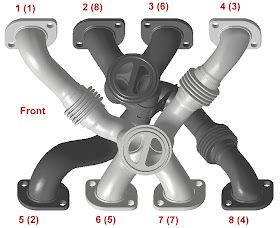K... I'm not looking for how to use the exhaust pulses more efficiently. A few other brands use a flatplane crank to even out the V8 pulses though. The firing order of Duramax and PStroke just needs a single crossover from each bank.
Give me the pulse volume, gas velocity, A/R volume, peak pressure, pressure dwell time in degrees, outlet flow at exhaust density for different outlet sizes, straight scroll angle. I'll do the math myself, those are the only things I want out of this thread.
I was hoping some people already had, and they would be the ones to chime in.

